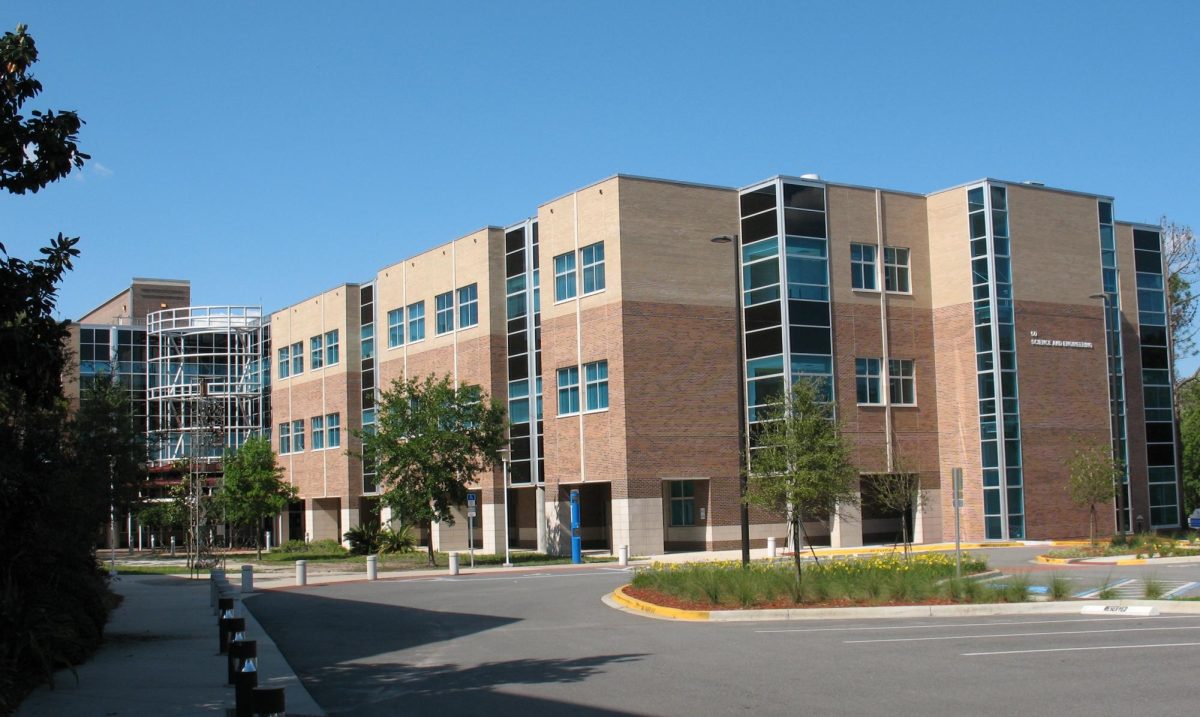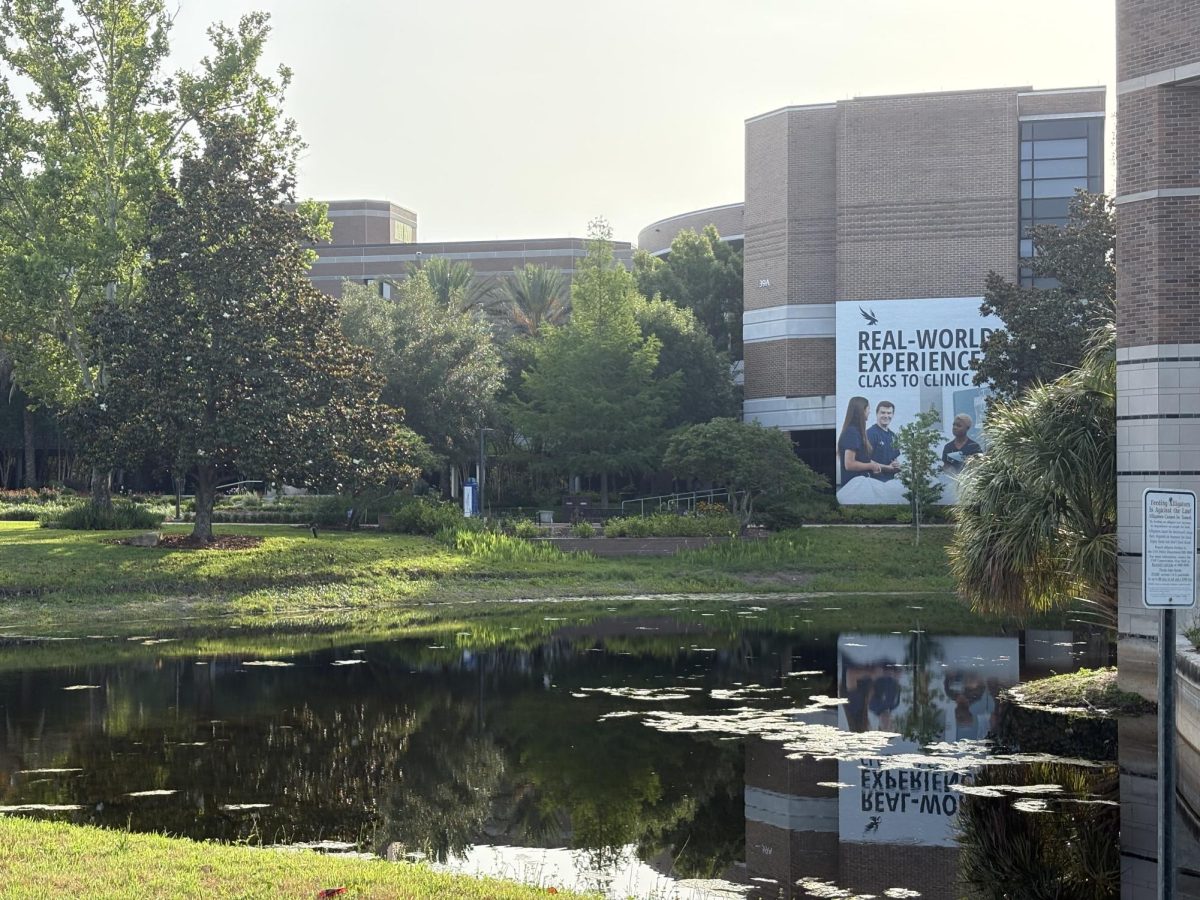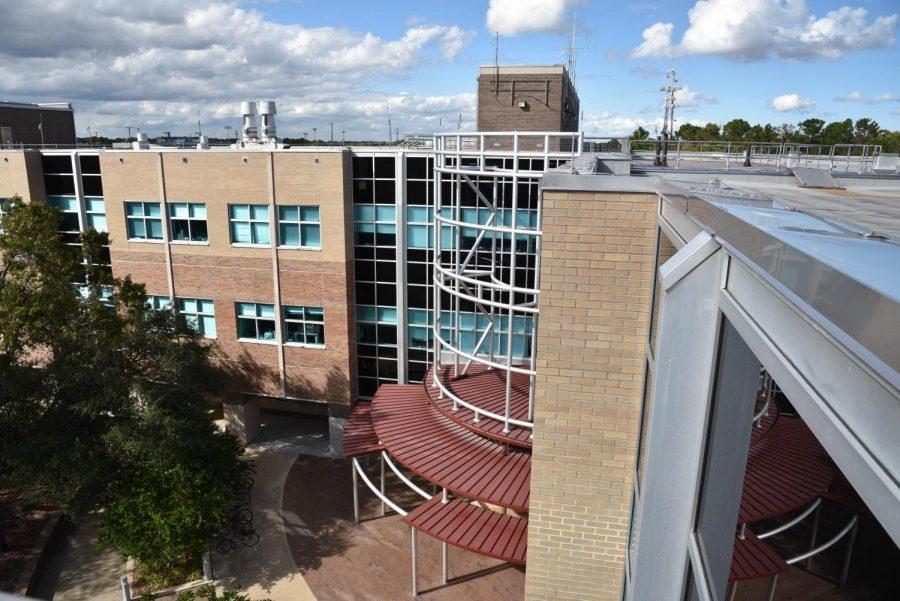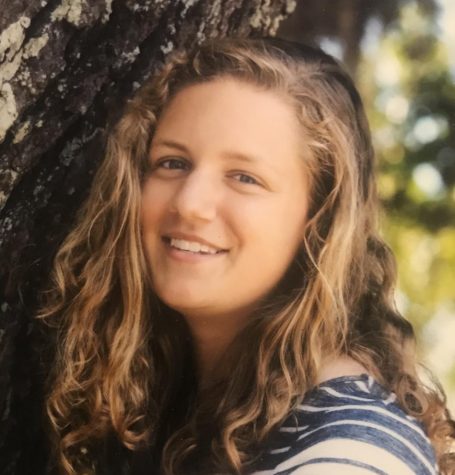Set to cross the 50-year threshold of existence this year, check out the history of the University of North Florida Police Department (UPD) and revisit some of the most interesting cases and stories over the years.
History
The UNF University Police Department (UPD) was established alongside the university when it opened in 1972. At the time, the department just had 15 members, and the university had 2,027 students enrolled. Initially, UPD was under UNF’s Administration and Finance division. The officers would go on security rounds and administer other basic services. They acted as security with very limited power to handle larger safety needs. Today, since the department’s accreditation, UPD has the same law enforcement powers as other local police departments. UPD has grown with the university to ensure there are enough officers relative to the number of students.
In 1974, university police departments were recognized by Florida statutes and gained law enforcement recognition. A year later, Martin Garris became the Chief of Police. With his leadership, UPD split into four divisions: Patrol, Investigations, Administrative Services, and Parking Services. He sought advanced training and diversity in the department. UPD moved to a stand-alone facility, named and dedicated after Garris in 2006, where UPD is still located today. Garris served as Police Chief until he retired in 1995 with Gene Owen replacing him.
In 1999, UPD met the standards to be accredited by the Commission for Law Enforcement Accreditation. However, in 2002, Chief Owen did not seek accreditation because the department only had 28 officers to provide security for 13,000 students and 2,200 staff members.
Starting as chief in May 2003, Mark Foxworth worked towards reaccreditation through reorganizing the department and adding new services. Simultaneously, UPD was moved from the university division of Administration and Finance to Student Affairs. With Foxworth’s leadership, UPD formed a better relationship with students by increasing community engagement and interaction. Parking Services were also separated from UPD. After implementing these changes, the department gained reaccreditation. Some officers were assigned to the Resident Life division in order to provide services and have direct interaction with students. A Civilian Manager was hired to manage the department’s non-sworn functions. The department also started 12-hour patrol shifts. The position of Community Affairs Officer was abolished because all members of the department were trained and responsible for community affairs as an alternative. UPD also created the Safety Ranger program to patrol parking lots at night, provide rides, and monitor the campus blue light phone system.
After Chief Foxworth’s retirement, John Dean served as police chief from 2003 to 2013. Currently, Dean teaches criminology and criminal justice classes at UNF. Interim Police Chief Bill Strudel briefly took over until Frank Mackesy, the current chief, was hired in 2014.
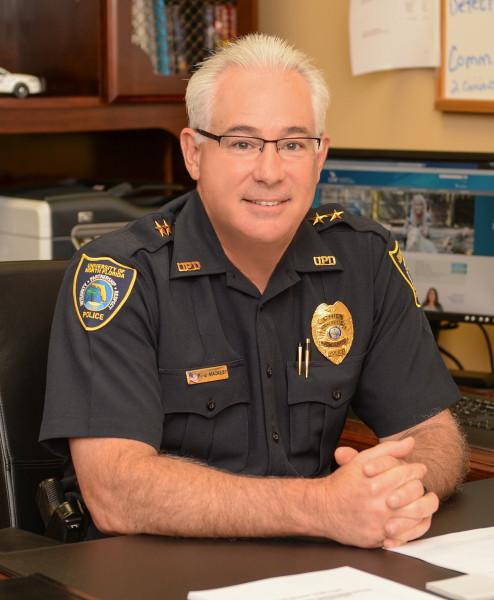
Currently, UPD has 32 sworn police officers under the leadership of Chief Mackesy. Most officers are retired from several different agencies including the Jacksonville Sheriff’s Office, New York Police Department, Broward County Sheriff’s Office, Florida Highway Patrol, New Jersey State Police, and more. UPD also has 10 civilian employees who mostly work in the communication center as dispatchers. The department has police cars, sport utility vehicles, bicycles, all-terrain vehicles, and golf carts for patrolling. There are officers who wear uniforms and officers that wear plain clothes.
UPD has the same function as larger units, but they do not have access to services like a bomb squad or a SWAT team. If needed, UPD will work with the Jacksonville Sheriff’s Office, with who they have a good relationship.
Deputy Chief Adam Brown believes UNF’s police department does a better job than other larger agencies because UNF already has a safe campus. UPD currently has a two-minute response time, which is quicker than other police departments, according to Deputy Chief Brown.
Accomplishments
According to information provided by Deputy Chief Brown, one of UPD’s accomplishments is their ability to handle security at all events on campus including graduation, athletic events, student move-in, and more. UPD has also performed large-scale investigations on campus.
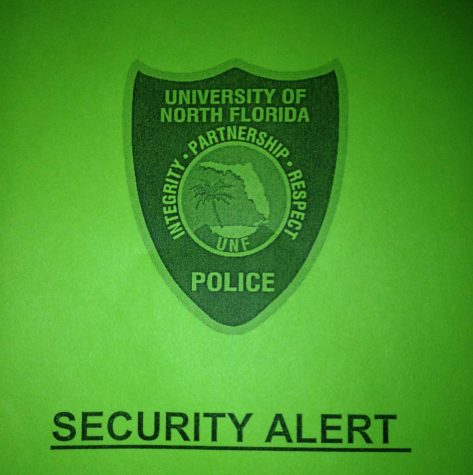
With state approval, UPD’s communications division has developed a 911 Public Safety Telecommunication Training Program with all fully certified Police Community Officers.
In Oct. 2019, UPD started using a Computer Aided Dispatch system (CAD). The system allows UPD to easily share information with other local agencies. CAD has helped the department to have a quicker response time when needing the assistance of local police departments.
Brown shared that UPD has set up and fixed their communication system to alert students on campus. In Oct. 2019, UPD began utilizing a new and more effective emergency notification system. The system speeds up the process of sending alerts because the messages can be sent from a single point. Since the start of the new system, UPD has adapted to new methods of notifying people on campus by using indoor and outdoor PA systems, phone calls, texts, push notifications, social media, website posts, digital signboards, and more.
UPD has had active shooter training with the Jacksonville Sheriff’s Office. Deputy Chief Brown feels proud of one particular moment where UPD handled a potential active shooter situation. A few years ago, a call informed UPD that there was an active shooter in one of the parking garages on campus. UPD responded quickly and was fully prepared to handle the situation in two minutes. Thankfully, the information was false. After that, UPD expanded training to staff and faculty members in active shooter response, and they offer this service to students if requested.
UPD’s biggest accomplishment, according to Brown, was gaining and maintaining accreditation. This accreditation allows the department to fully function and keeps the campus as safe as possible.
“That’s a big deal for us, because, when you receive law enforcement accreditation, it is formal acknowledgment that you’re doing things the way you are supposed to do it. The accrediting agency, they look at every aspect of the university from training, discipline, our equipment, our written directives, everything,” he explained.
Interesting Crimes and Stories Over the Years
Over the past five decades, UPD has seen various types of crime on campus. The most common crimes have included: theft, drug and alcohol possession, and stolen parking decals. While these possession and theft incidents are still common, Parking Services moved away from using parking decals by replacing them with an electronic system. Not all cases were fully investigated due to lack of evidence, and not all cases have resolutions because of a lack of public information.
Oct. 8, 1980
Shots were fired on campus around 9:00 am. UPD heard the noise and went to investigate. Two men, accompanied by dogs, were caught illegally hunting hogs. The hunters were spotted on UNF property by the sheriff’s department’s helicopter. The suspects were arrested after being pursued by helicopter, five UNF police officers, and the Fresh Water Game and Fish Commission.
1991
At UNF’s Lake Oneida, UPD arrested a man on his birthday for possession of LSD and a fake driver’s license. An officer approached the man’s car, a 1983 Toyota, and told him the lake was closed. The man got out of the car angry at the officer. After searching him, UPD confiscated the LSD, and the man was taken to Duval County Jail. Public Safety Director and Police Chief Martin Garris had not seen LSD on campus before in 14 years of working at the university. “I hope this isn’t an indication that LSD is making a comeback. It has been proven to be an extremely dangerous drug,” Garris said.
Oct. 6, 1993
In Osprey Hall, a student slipped and fell unconscious. When asked about the incident, a group of other students admitted they were all hall surfing when the student fell and hit his head. The students were running and sliding on the wet floor by the showers. The student regained consciousness and was taken to the hospital.
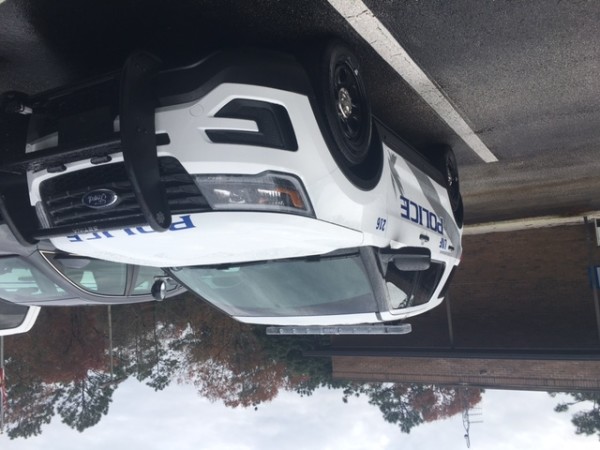
Nov. 15, 2005
A student in Osprey Landing heard someone knock on his door. Without looking to see who it was, the student told the strangers to enter the room, and two older men walked in. When the men refused to leave, a loud argument began, concerning those who heard it. The student recently broke up with his girlfriend and recognized one of the men as her father. He immediately called the building’s RA for assistance. With the continuation of the verbal altercation, the man suddenly punched the student in the face. This act of violence sparked a larger physical fight. Finally, the fight was broken up after the RA called the police. One of the men stole the student’s glasses before running away in fear of being caught. One of the suspects left his phone in the student’s room. The police were able to identify the suspect after they called someone from the phone. One of the officers then used a phone book to find the suspect’s address and scanned the address getting photo identification.
Jan. 28, 2006
While completing a safety inspection, an RA saw a student standing on a balcony drinking beer at one of the Housing areas on campus. The RA told the student that alcohol was prohibited before going inside the building. The student, along with others, left the scene before the RA could further talk to him. When speaking to the RA, the resident of the room claimed the other students randomly walked into the room without her permission. When the others entered with beer, she left the room to avoid getting in trouble but did not try to call the RA or UPD for help. She did not know the other students but told UPD she believed they were all in the Navy. Four empty beer bottles were found in the room. The RA and UPD contacted student conduct to take care of the situation.
Oct. 11, 2008
At Osprey Crossings, several students reported a man walking around in a white mask. A witness shared that the man walked up to his car window and stared silently at all the passengers. When the witness drove away, the man started running to follow the car but failed to catch up. Other witnesses shared that the man scared them as they left the elevator. After the suspect was found, he promised UPD that he would never do anything like it again.
Apr. 2, 2010
UPD officers, who were off duty at the time, contacted the police to deal with a fight between rival dance groups that occurred on campus. After a dance competition, members of “What’s Next,” from Bethune-Cookman University, blocked traffic when they noticed damage to one member’s vehicle. The dance team saw members of “Boyz of Poison,” from Florida Agricultural & Mechanical University, damage the car before running off. Because they ran away, the dance team was never questioned about the incident.
Sep. 10, 2013
Two students working on a group project started verbally fighting but were able to work out their differences to complete the work. One student was told by her brother that someone was calling her a horrible person and a liar on social media. The student went online and saw the account was owned by the other student’s mother. In a message to the mother, the student asked for her to stop spreading lies, but she received no response. With UPD’s involvement, the other student told them that it would not happen again.
Oct. 9, 2013
After receiving a package of beauty products, a student residing in Osprey Crossings contacted UPD because she believed a man was stalking her. The stalker recently downloaded and reposted pictures from the student’s Facebook account. He added captions to the photos commenting on her appearance. Based on the comments, it appeared the two were romantically involved, but the student denied this, telling UPD he made it up. She sent a message to the stalker telling him to stop. With no response, the student received a package with beauty products, earrings, and a plastic rose. The package also included a two-page letter where the stalker professed his love and drew flowers. In addition, the letter asked the student about her ex-boyfriends, if she was a virgin, and for a picture of her hair. As a response, she blocked the stalker on social media and requested for the stalker to be banned from campus by the State Attorney’s office.
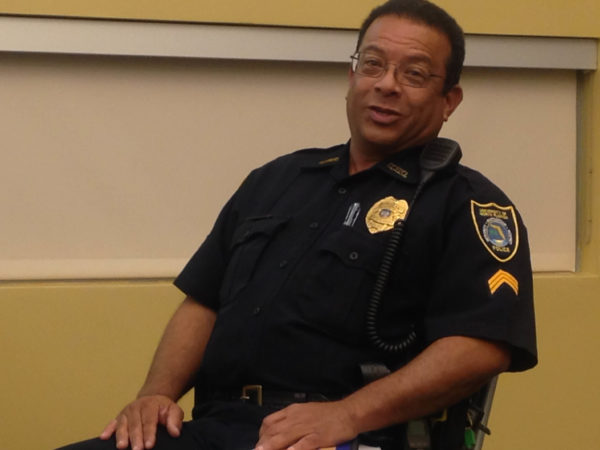
Sept. 19, 2013
After receiving suspicious emails, a professor at UNF contacted UPD. The emails were sent from a person pretending to be an FBI agent. The professor received another email and feared she was being watched. At home, the professor heard the doorbell ring and looked out the window to see an unfamiliar woman and a man inside of a car. The next day, the professor remembered a strange conversation she had with a student not too long ago. The student denied the emails and denied standing outside of the professor’s house. After tracing the email, UPD confirmed the student did send them because they traced back to the computer she was using. Finally, the student admitted her involvement, and the case was sent to the Counseling Center and Student Conduct.
Jan. 8, 2014
In Osprey Fountains, students reported seeing a female student screaming and walking around naked in the hallways. The student was speaking to herself in the third person, appearing distressed. She went back into her dorm room where she continued to scream until UPD arrived. She answered the door covered by a blanket. The student told the officers she needed help because she thought she was going insane. Quickly, she slammed the door before immediately reopening it. The student walked down the hallway again and stood in front of a window naked. UPD and a Resident Life Coordinator tried to convince her to go back into her room, but she would not leave the window. The student began to scream again, asking to be taken to heaven. She was later taken to Memorial Hospital and was later admitted to receive psychiatric care, using the Baker Act.
Mar. 25, 2014
Urgently, a student called UPD to report a hostage situation. The call informed UPD of a man, who was in the Osprey Landing courtyard, with his arms and legs taped to a chair and a pillowcase over his head. The student also reportedly witnessed a man running away while laughing. Three minutes after the call, the officer approached the scene and found nothing matching the description. Inside the elevator, the officer discovered a note attached to strands of duct tape that read “$50,000 or we pull the trigger!” UPD could not find any more evidence relating to the situation.
Oct. 17, 2016
With the rise in the fear of clowns in 2016, two calls reported clown sightings on campus to UPD. The first call was made at 11:30 pm informing UPD of a clown walking across the Green. The second caller asked UPD for a ride because she was afraid of the recent sightings. UPD had no evidence of clowns on campus until a clown wearing yellow was seen late at night walking around various areas of campus. The clown disappeared, and UPD did not investigate further due to a lack of information.
___
For more information or news tips, or if you see an error in this story or have any compliments or concerns, contact editor@unfspinnaker.com.








